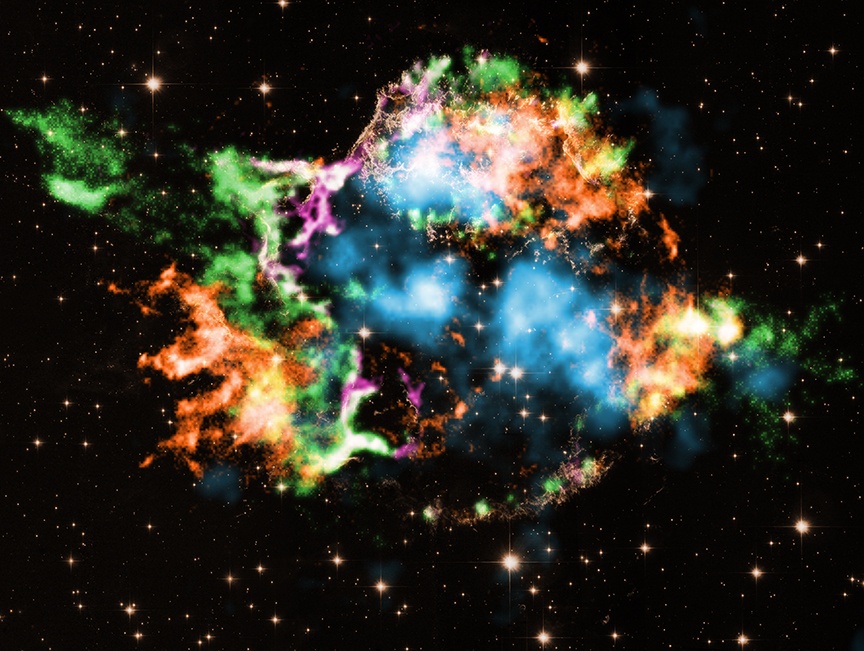Exploding Stars are Titanium Factories
By Paul M. Sutter
If you’re a fan of titanium, you should head to the nearest supernova. You’ll get more than enough of it. And its presence can help astronomers understand how supernovae work.
We understand the basic picture of how the most massive stars die. Once an iron core fuses in their centers, they stop producing energy from nuclear reactions. The star collapses, squeezing the iron core to such a degree that it turns into a proto-neutron star. The rest of the star bounces off of that neutron core and begins to explode. Either the core remains, or itself collapses into a black hole.
But that’s not the end of the story. Simulations of these supernova explosions show that the blast wave quickly loses energy and stalls before the star goes boom. Astrophysicists believe that a flood of neutrinos – tiny, nearly-massless particles released when the iron core converts to a neutron star – reinvigorates the shock wave and really gets the whole supernova party going.
As compelling as this story seems in our computer simulations, it’s tough to actually observe, since we can’t peek inside of a supernova as it’s going off. So we have to take the next best thing and try to predict how these explosions would behave and what they might produce, and compare that to our best guesses from simulation.
And who knew that titanium would hold the key.
Most, if not all, of the titanium you encounter in your everyday life was forged inside of a dying star. It can only form in the intense, neutrino-driven fury of the supernova blast, but to date astronomers have not seen titanium in the ejecta of supernova.
Now, a team of astronomers used NASA’s Chandra X-ray Observatory to study Cassiopeia A (Cas A), the remnants of a supernova that went off 350 years ago sitting 11,000 light-years away.
“Scientists think most of the titanium that is used in our daily lives — such as in electronics or jewelry — is produced in a massive star’s explosion,” said Toshiki Sato of Rikkyo University in Japan, who led the study that appears in the journal Nature. “However, until now scientists have never been able to capture the moment just after stable titanium is made.”
“We have never seen this signature of titanium bubbles in a supernova remnant before, a result that was only possible with Chandra’s incredibly sharp images,” said co-author Keiichi Maeda of Kyoto University in Japan. “Our result is an important step in solving the problem of how these stars explode as supernovae.”
“When the supernova happened, titanium fragments were produced deep inside the massive star. The fragments penetrated the surface of the massive star, forming the rim of the supernova remnant, Cas A,” said co-author Shigehiro Nagataki of the RIKEN Cluster for Pioneering Research in Japan.
The presence of titanium is a smoking gun that neutrinos were responsible for producing the supernova blast, and the observations will help validate current models and lead to a more detailed understanding of these powerful explosions.
The post Exploding Stars are Titanium Factories appeared first on Universe Today.

May 14, 2021 at 04:05AM
via Universe Today read more...

Post a Comment